Last Updated: 1st February 2019
In this guide we are going deep inside the world of private blog networks.
Starting from the absolute basics, we’ll be guiding you through how to setup, manage, and use a PBN in 2019.
With 8,000 words of step-by-step training, even intermediate to advanced SEOs will learn something new.
Let’s begin…
Contents [hide]
- 1 What is a PBN?
- 2 Is it against Google’s guidelines?
- 3 Does it work?
- 4 Why does it work?
- 5 An Introduction to Metrics
- 6 Where To Find Domains
- 7 Finding Hosting For The Domain
- 8 Setting Up The Website
- 9 Creating Content For Your Website
- 10 Site Structuring
- 11 Linking To Your Money Site
- 12 Advanced Clustering
- 13 Alternative Solutions
What is a PBN?
A Private Blog Network (PBN) is a network of authoritative websites used to build links to your money website(s) for the purpose of ranking higher in the Google search engine.
A money website is the website you intend on ranking i.e. the one that actually makes money. This can also refer to a clients website.
In its most basic structure, the finished result appears like this:
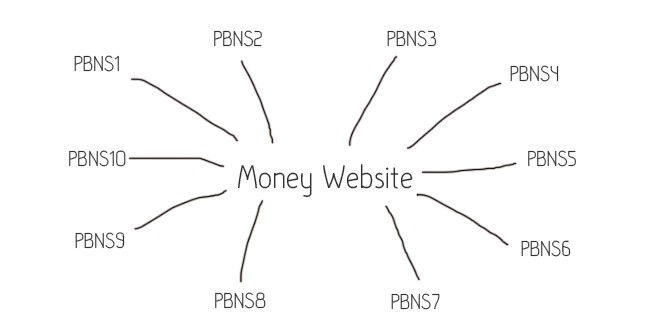
PBNS stands for ‘PBN Site’, referring to a website that is part of your private blog network.
One very important detail here is that each of the individual PBN sites are not linked to each other in any way. The idea of a private blog network is that the websites appear unrelated to each other, therefore natural links, as opposed to someone linking to their own website from their other websites.
Is it against Google’s guidelines?
Absolutely.
The only time Google are going to tell you exactly how to rank is when they are advising you to use AdWords. But for ranking within the organic results, they are the worst source for information.
And I would do the exact same if I were in their position. Why tell you how to rank for free, when you make over $40 billion per year from ad revenue.
Does it work?
Take a look at these headlines from September, 2014:
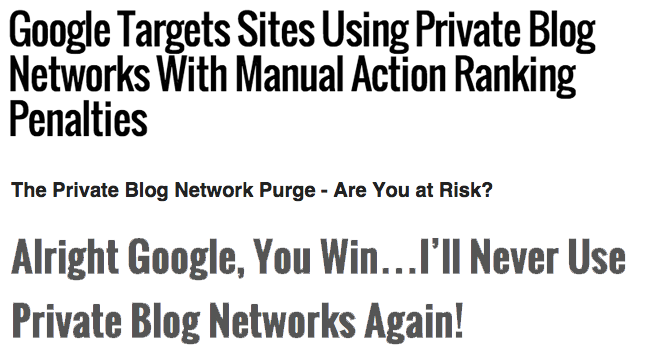
If it didn’t work, I’m sure Google wouldn’t be attempting to target them and scare people away from the strategy.
And yes, this was little more than a scare tactic, people are still building networks and ranking as easily as ever.
Why does it work?
Links are the most important ranking factor.
It turns out that backlinks, even though there’s some noise and certainly a lot of spam, for the most part are still a really really big win in terms of quality of search results.
That is a quote from Matt Cutts, when asked about excluding backlink relevancy from the algorithm.
What makes this strategy effective is the websites that form a PBN are regarded by Google as authoritative. You are not receiving links from some brand new website, nor a spammy untrustworthy one, you are receiving links from a popular website Google’s algorithm loves.
To understand how this works, here is a figurative example…
An initiative was launched in 2011 to help clean up the streets in Chicago. They had a website setup under cleanchicagostreets.com.
The initiative received a lot of publicity, they were featured on their local governments website and local news websites.
They raised enough publicity and money to follow through their plan. And they did, all within a year.
Now their website is no longer needed, and has become a pointless cost to renew the hosting and domain. So they leave it to expire.
This is a domain that has links from local government websites and local news websites. And because it has links from these highly trustworthy sites, Google also presumes this website is trustworthy.
Fast forward to today, an SEO finds this domain, can look up the metrics to see how trustworthy and authoritative it is regarded, then purchase it from any domain registrar to use for their PBN.
That is in essence, how domains are found.
Between 30,000 – 50,000 domains expire every day, many of which will have good ‘metrics’ for a PBN.
An Introduction to Metrics

There are 4 main metrics to use for measuring domains. You can use all of them at once, but often times 1 or 2 is enough.
These are…
DA – Domain Authority by Moz.com
PA – Page Authority by Moz.com
TF – Trust Flow by Majestic.com
CF – Citation Flow by Majestic.com
I’m not technical enough to know exactly how these all work, but here are the basics…
DA measures how authoritative the whole domain is, based on the links to it.
PA measure how authoritative a single page on the website is, based on the links to it. This is also influenced by the DA of the website.
TF measures the trustworthiness and authority of the websites links.
CF measures how powerful the links to the website are.
Here is a quick reference guide on what to look for:
DA – 18+
TF – 13+
CF – 15+
I have bought domains weaker than this on numerous occasions, but this is the general guideline I try to follow. Don’t worry about following it exactly.
These metrics represent the power of the domain you are looking at, but there are a few more things to check before purchasing it…
Referring Domains – A metric that shows the number of websites that link to the domain you are looking up. Anything above 30 is good enough here.
Backlinks – This is the number of links the website has. If a single website links to the domain 3 times, then it’s 3 backlinks but only 1 referring domain. Make sure you check these before purchasing a domain.
Anchor Text – This is the text people use when linking to the website. Look to see if they contain a brand name (which is normal), and avoid ones that are: heavily keyword targeted, have big brand names that are often associated with selling of fake goods, and other obvious things like viagra or adult themed.
Metrics Checking Tools:
OpenSiteExplorer – Check DA & PABulk DA Checker – Check DA in BulkMajestic – Check TF, CF, Referring Domains, Backlinks, and Anchor Texts- Ahrefs – Largest index of live backlinks aka most reliable (Recommended)
I highly recommend you get yourself an Ahrefs account, sign up for a 7-day trial here.
The only metrics that matter in 2019
Trust Flow is BS? Domain Authority is BS? These have been the trending comments in our community for a while now, but who do you believe?
The answer is:
The only thing that matters is what Google thinks. Not Majestic, Moz, Ahrefs, or anyone else.
From the moment Google announced they “have no plans to do further updates” to PageRank, there’s been no way of knowing exactly how Google measures a domains quality.
That is where the above metrics come into play. They’re not perfect, but they’re third party algorithms for measuring domain quality, based on their theories of what Google finds important.
Sometimes they’re inaccurate. Other times they’re a great analysis.
The most important thing is that you manually check the backlinks. If the backlinks are from an automated link building tool, chinese anchor texts, thousands of blog comments, mostly directory listings, etc. Then it’s a bad domain.
To take this further, here’s a breakdown of metric checking in 2016:
- Do the metrics pass your requirements?
- (If no) Are any of the links from super authority domains?Some times these can be worth purchasing anyway i.e. BBC.co.uk links
- (If yes) Are the backlinks spam or low quality?
- (If no) Does the Wayback Machine show it was used for spam?
The Wayback Machine allows us to see exactly how the website used to look in the past, so we can verify if it was ever used for spam in the past.
Where To Find Domains

Knowing what to look for in domains is only part of the game, next you need to know where to find the domains.
Before we cover that, you need to understand the types of domains to find.
Expired VS Expiring Domains
Expired Domain – A domain that fully dropped and is available to register from anyregistrar at standard domain registration costs.
Expiring Domain – A domain that reached its expiration date but was held onto by the registrar for auctioning / selling. These domains retain their age i.e. if they previous owner registered it 5 years ago, it remains a domain registered for 5 years.
There is no conclusive data as to which type of domain is better. Some people believe expiring domains provide more power, but many of those with this are biased by the fact that they’re selling expiring domains.
All I can tell you for certain is that both types work. You are however much more likely to get an expiring domain with high metrics, than an expired, but you’ll also pay for that privilege too.
As for finding domains, there are a number of strategies for this:
- Find a broker – Easy
- Scraping – No longer viable
- Auctions – Time Consuming and Easy
- Backordering – Time Consuming and Advanced
Option 1 – Finding a Broker
Here is a list of brokers websites you can buy from 1 at a time or in bulk.
Please note that I have not used all of these brokers, but I have at least heard good things from others about all of them.
- PureQualityDomains
- HighPADomains
- TBSolutions
- Join the Lion Zeal Marketplace for a 4,000+ person FB group for buying / selling SEO stuff
Option 2 – Using Auction Websites
Before scraping was popular, most people would buy domains from auctions. These are expiring domains, they keep their age because the registrar is selling it off after they owner failed to renew it.
You can usually find more powerful domains on auctions than from scraping because the dropped (expired) ones are picked up fast by your competition – if not already bought in the auction stages. The downside to auctions is that you pay extra to get first pick.
Some auction sites you can look at are:
- NameJet – Potential to find high quality options
- GoDaddy Auctions – Used to be THE place to buy PBN domains
- NameCheap Auctions – Thousands available in the marketplace
Option 3 – Backordering
The final strategy for purchasing domains is probably the most advanced, but it is the best domains you can get for the money they cost.
A backordering service is a company you pay to catch a domain for you as soon as it drops from registration.
We briefly covered earlier that when a domain expires it doesn’t really expire. It’s often kept onto by the registrar, sometimes auctioned or sold, and usually doesn’t drop for around 2 months.
Scraping tools search for very old websites and attempt to buy domains that were missed by people backordering. But with the advent of scraping and selling domains as a business, and with our industry literally purchasing millions of dollars worth of domains per year, it’s very difficult to scrape very high quality domains today.
With backordering however, you can request domains that have expired but not dropped yet through a backorder service. They’ll repeatedly check if the domain can be registered yet, if it can, they’ll attempt to register it for you. This part is called dropcatching.
The success of this ultimately depends on the competition. If everyone is trying to get this domain, you may be out of luck. Also some services are better than others at it.
To increase your chances, you can backorder with multiple services, depending on how badly you want the domain.
If someone else backordered it with the same service, and that service catches it, it’ll go into auction between you and them – which can get pricey.
Here are some backordering services:
Many of the above services will provide you with pending delete lists too, this is a list of domains that are about to drop that you can backorder.
Here are some specific links to help you:
This strategy is listed for the advanced users, it is far from simple. You’ll also need some tools to help check the metrics of all the domains in the lists above to check for quality. If you want to get the best expired domains though, this is the way to do it.
Important Things To Note About When Purchasing Domains
Private is the first word in PBN.
You can’t hide from Google, you need them on your websites to see the links and pass on the power. But you do need to make sure there is no association between these websites. They need to look independently owned.
When buying domains, this means mixing up your domain registrars and registration dates. Do not always buy from the same one. And do not have your name and information in the whois for every domain.
Here are a few domain registrars to try:
- NameCheap
- Internet.bs
- Name
- Dynadot (quick heads up, these guys show your name even if you purchase whois protection)
- GoDaddy (watch out for their expensive renewal fees)
Finding Hosting For The Domain

Now that you have the domain(s) in your possession, you need to setup hosting so you can get your website(s) live.
To avoid Google (or anyone else) knowing you own all the websites, you need to put each of them on different hosting accounts.
If they were all hosted on the exact same server, it would be clear they are all associated with each other.
This need for separating hosting providers sparked the popularity of SEO hosting services.

The problem with “SEO hosts” though, is that most of them have footprints which show they are all the same provider. You can read about hosting footprints here.
The best thing you can do then is to hide in plain sight.
You do that by using popular hosts that real websites would use.
Here are some examples:
- Premium Shared Hosts
- DigitalOcean (technical)
- Amazon Web Services (technical)
- CloudFlare (read my guide)
- Incapsula (read my guide)
Most of these are expensive in comparison to SEO hosts or cheap shared hosts, but it’s worth it for the reduced risk of losing your network.
Thankfully, there is a cheaper option.
My friend Kevin decided to purchase reseller accounts from all the popular shared hosting companies recommended here, and will host your PBN sites on them for a significantly lower rate (starting at only $1.82/m per site).
Learn more about Kevin’s service here
There is a cost associated with setting this all up, and it can be scary for beginners, but the overall ROI from ranking top with multiple sites should easily justify it.
Later in the guide we’ll cover an advanced strategy named clustering. This will allow you to host multiple PBN sites on the same hosting account with zero risk – but only if your hosting plan allows it. So make sure the packages you purchase allow multiple domains and MySQL databases.
For now, just know that the safest way is to only host 1 website per host, and to use high quality hosts.
Setting Up The Website

You have a domain and hosting, now you need to setup the website.
Don’t worry about being a HTML whizz, we are simply going to use WordPress and free WordPress themes.
Most web hosts will make this extremely easy for you by offering the Softaculous auto installer, here is a quick example of how it works…
Login to cPanel (the host should provide you with login details for this) and locate the Softaculous auto installer, it usually looks like this:
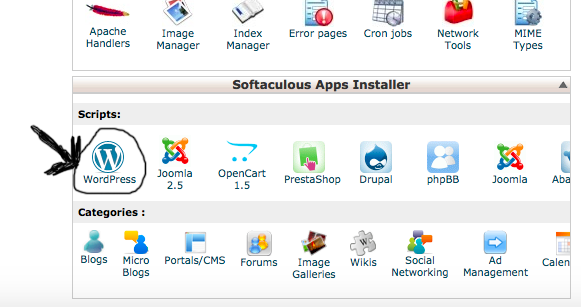
Then hit the blue install:
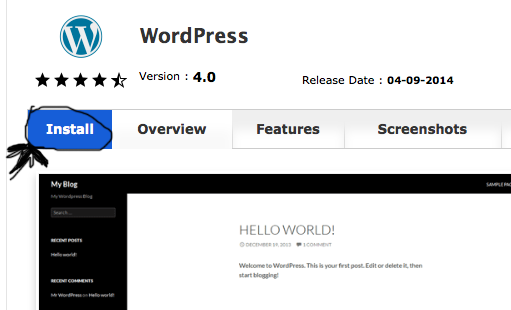
Next you need to choose the protocol, which will be ‘http://www.’ in 90% of cases, and also set the ‘In Directory’ field to blank.
To determine what to look for ‘Choose Protocol’, have a quick look on Majestic.com. Enter the root domain, and then the domain with ‘www.’ in front, to see which one has the highest TF and CF. Quick example…
Without WWW:

With WWW:

The reason there is a difference is, most websites were setup with either one or the other, which is what will receive most of the links – therefore have higher metrics.
Back to the setup… Select the protocol and make sure the ‘In Directory’ field is blank:
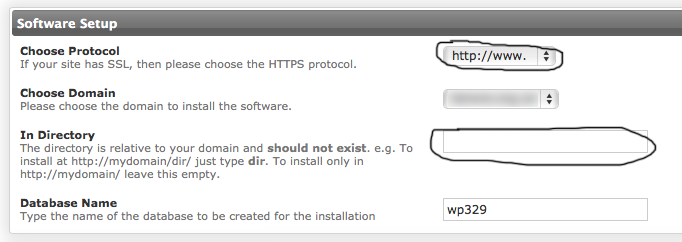
Next fill out the site information, I’m sure you don’t need to know how to do this:
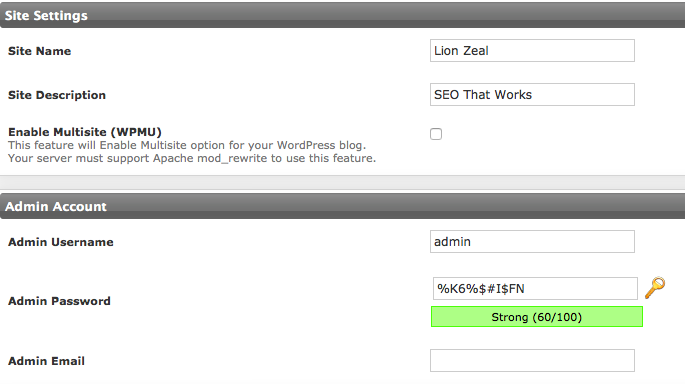
That’s about all there is to it, then you simply scroll down and click the ‘Install’ button.
Building websites and installing WordPress has never been easier.
Before you do that though, you need to know what the website will be about. That is called Theming.
This has already been covered in the Future of PBNs post, I’ve just pasted it here to make it easier for you…
Many people starting out ask whether to re-theme a domain or not. This is where you take a domain that was previously about one topic, then change it to be about another.
Site re-theming is a perfectly normal thing to do, and seems to be unaffected throughout Google’s many shots at PBN users so far.
Domains are re-registered all of the time, and tons of brands have random names… maybe LionZeal.com used to be a blog about Lions.
So lets cover a few ways of theming a PBN site…
Option 1. Re-themed Blog
This is what most people do.
It is where you register a domain that used to be about one topic, then change it to a topic more relevant to your money sites.
If you are willing to put a little extra work in, you can step this up a level.
Take for example, you register the domain ‘thecatowner.com’. It used to be about cats, but you need a blog relevant to travel.
Easy. For maximum relevance for the domain and your money site/client, you could create a blog about travelling with a cat.
You can also keep the links relevant. If you were linking to a hotel client, write an article about finding a cat friendly hotel.
Let’s cover a few more examples of this…
- LaFerrari.com – used to be news on Ferrari’s, you need it on internet marketing. Make it a blog about doing internet marketing and your goal to own a Ferrari
- WooDesign.com – used to be a web design agency, you need it on home and garden. Make it a blog by a home design fanatic
- TheDarkSide.com – used to be a Star Wars fan site, you need it on health and fitness. Make it a blog about the dark side of the health and fitness industry
- LaptopBagsNow.com – used to be a site selling laptop bags, you need it on style and fashion. Make it a blog on style and fashion that used to be just a laptop bag style review site, explain this in the about page. You could even “sticky” a post on ‘Laptop Bag Styles for Women’ and another ‘Laptop Bag Styles for Men’.
- SocksAndUnderwear.com – used to sell socks and underwear, you need it on entertainment. Make it a blog on keeping entertained in your socks and underwear aka at home on your own via the internet, TV, etc.
Sometimes this is really hard to do. In which case, you can use these last resorts:
- “I am a really big fan of XYZ and wanted to name my blog after it”
- “I just had this domain lying around from an old XYZ site, and decided to use it for this blog”
This is the most common way of theming a site. The downside is you’re locking it down to one niche, so it becomes difficult to link to others.
There are a few different strategies you can use to overcome this. The first one we’ll cover, is brought to you by Lion Zeal Mastermind member, Johnny Walters:
Option 2. Cityscaping
Cityscaping: The act of building a website around a real city with semi-fictional content.
Say you are setting up a PBN and come across the domain “springfieldmoms.com”. You’re thinking, “that’s stupid, I don’t even have anything going on in springfield, that’ll look fishy on a manual review”. This couldn’t be further from the truth. Sites like these are truly dynamic. There are over 30 cities named “Springfield” in the US. Pick one that suites your purpose and go check out the official city’s website. Perhaps you are targeting something in Massachusetts. In that case, head over to http://www3.springfield-ma.gov/cos/ and get all your content. Your menu and pages might look something like this:
- Home
- About (About Springfield Moms, mission statement whatever)
- Club Officers (Fake names and roles in the club, great place to put some photos)
- Springfield News (Page that just pulls in the actual city’s news feed)
- Event Calendar (Embed the actual city’s event calendar)
- Contact (contact form + small blurb)
And here is an example format of your first 8 posts:
- Blog introduction
- City event from the official calendar (Festival, Farmer’s Market, etc)
- Featured Business of the Month – If your niche is weight loss your featured business of the month might be “Lake View Fitness Center”. The Article could be “5 tips on losing that holiday weight” with your link strategically placed in there.
- Fun facts about the city (wikipedia link)
- City Event from the official calendar (Festival, Farmers Market, whatever)
- Youtube video from that city
- Featured Business of the Month (Repeat formula from the last one)
- Pictures from the last city event
- and so on…
Option 3. Keep the old niche
If the domain you purchased is relevant to your money sites, then perfect, just keep the same niche. But even if it wasn’t, you can still follow this option.
Start by figuring out the niche of the domain.
You can often guess the old niche based on the domain, but there are two other ways of finding it very easily.
The first is the Wayback Machine, a website/tool that saves regular copies of websites, allowing you to “jump back in time” to see what a website used to look like.

You can then look back in time and select any date that comes up, for this example I just picked Jan 1st 2014.


You will now be shown what the website used to look like on that date.
Some times there are issues loading it completely, maybe some images are missing, or the style is messed up, but it shows you exactly what the website used to be about.
The other way is to use Majestic or Ahrefs and look at the websites that link to it. Majestic also has a very useful “Topical Trust Flow” feature:

This tries to figure out the topic or niche of the website, based on the websites that link to it. In this example, we can see it is fairly accurate for the website goodreads.com, with the top 2 topics being libraries and literature.
Some times this isn’t that accurate, and you can look at the top links near the bottom of the page:
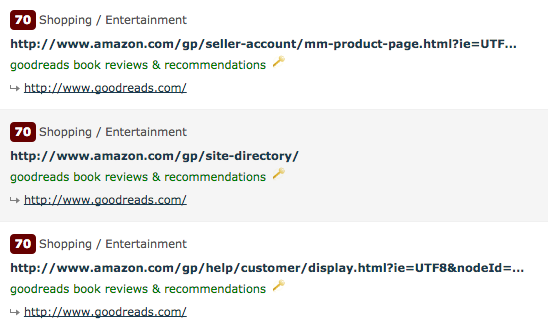
You can see that it has links from Amazon, which is relevant, and it even shows the anchor text used to link to the website “goodreads book reviews & recommendations”. Very easy to see what this website is about.
Most of the time it will be quite easy to figure out, if the top links are from travel blogs, it’s most likely a travel relevant site, etc.
Option 4. Local Business site
The 4th option is completely different to traditional PBNs, but why it works so well. This is an easy way to fly under the radar of what most people think of as a PBN site.
What you do is set it up to look like a real local business.
For example:
- Have a business logo
- Add a list of products/services, preferably with images
- Have a contact page for people to get in touch
- Have a local address and phone number for people to contact (make it up)
Do everything a real local business would do.
Then you just “sneak” the links in later from your homepage. Relatively easy to do if you have 500-2,000 words on your homepage.
The downside of this approach is the PBN sites niche needs to be fairly relevant to your money site, since you won’t be able to create a new 500+ word post dedicated to the topic.
Moving on, now you’ve decided on the site theme, and installed WordPress, here is what you need to do next…
WordPress Theme
There are a LOT of free themes available for WP, they’ll be more than sufficient.
The only important thing for this is that they show the full posts on the homepage, not an excerpt. With the exception of the local business site type, since they won’t be showing blog posts on the homepage.
Examples:
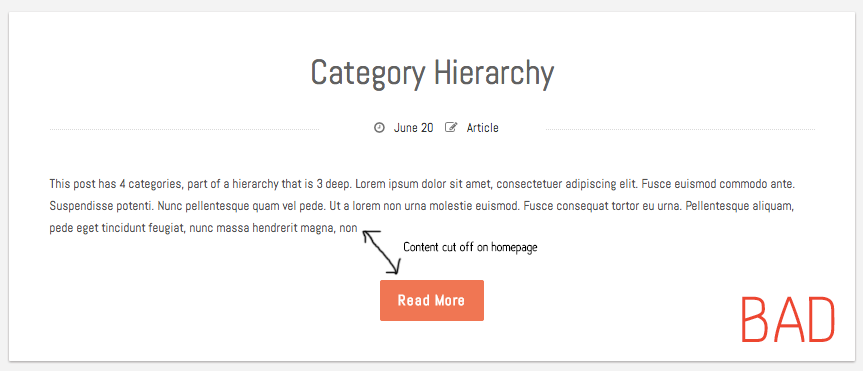
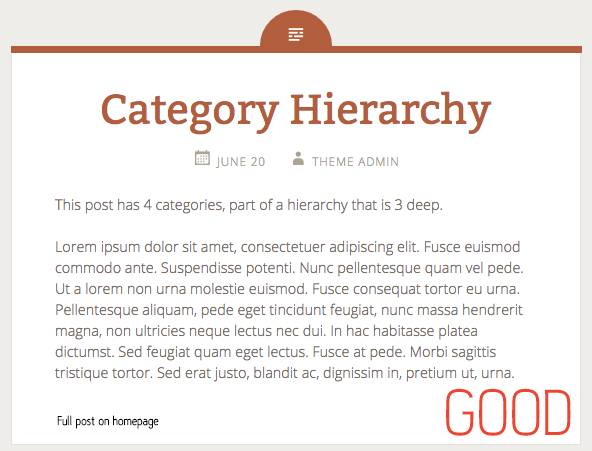
We need the full length post to show on the homepage, so our money site links also display on the homepage. This is most often the most powerful page on the website.
Make sure you’re constantly using different themes for each of the websites. Using the same one is another clear footprint that the websites are probably owned by the same person.
WordPress Plugins
It’s recommended that you install a few different plugins on your website just to make it seem natural. Again, make sure these are not the exact same ones every time.
Part of retaining the linkjuice on the website is by capturing any linkjuice sent to old pages from the previous website.
So if the domain you purchased used to have a page like “example.com/cat-food.html”, and that page has links pointing to it, then you can rebuild it to capture the power of those links.
The safest way of doing this is to manually replace or redirect the pages from the old website.
Here’s how:
Use a tool like Majestic to find the top pages for a domain, like so:
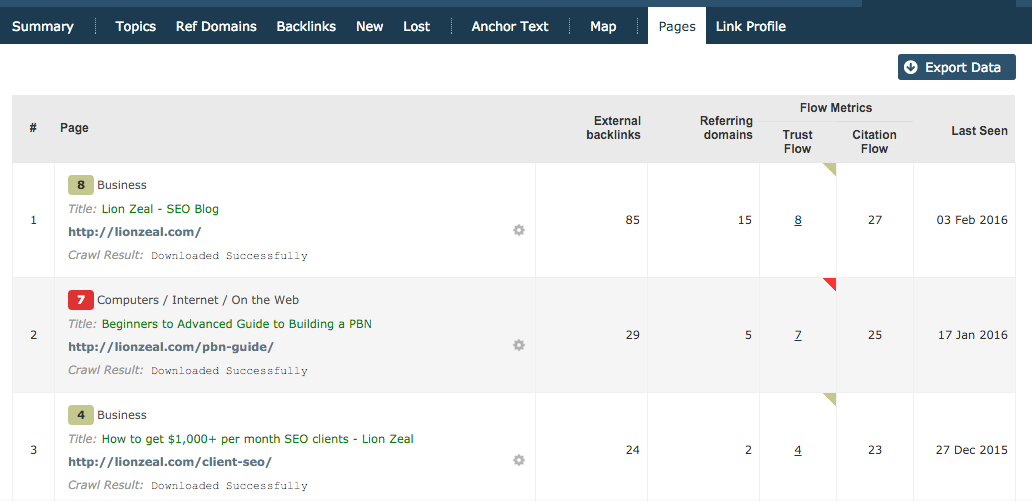
At this point you can either re-create the pages, or use a plugin such as Simple 301 Redirectsto manually redirect the page to a similar topic page.
For rebuilding the pages, you can either manually write the content as a “Page” in WordPress, or even directly copy it from the WayBackMachine (as mentioned earlier).
If the URL is “/something/” then use that as the permalink, but if it’s something you can’t normally create with WordPress, such as a “.html” file, then you can use the Custom Permalinks plugin to let you create that.
WordPress Settings
It’s advised that you turn off notifications to websites you link to, this will only annoy you or your clients with the notifications.
This setting is under Settings -> Discussion:

Creating Content For Your Website

This is where most people get lazy and make big mistakes.
The initial content you add will make a huge difference to how legit your website looks and how likely it is to pass manual reviews in the future.
I personally recommend you have a minimum of 2-3 pages and 2-3 posts. The more the better.
This process is called PBN Padding, you are effectively adding content to the website to hide the fact that it’s only setup for link building.
The first step to creating the content is deciding on an author persona. Who is behind this blog?
This gives you consistency in the writing style on a single blog, but mixes them up across all the blogs.
One blog may be written by a backpacker sharing their experiences and travels, another by an association sharing industry news and best practices.
You’ll want to introduce these authors on some type of about page, share their photograph, and tell their story of why they started this blog. Basically what anyone would do if this was a legit site.
Be careful with YMYL (Your Money or Your Life) niches. These include:
- Pages soliciting personal information, such as personal identification numbers, bank account numbers, driver’s license numbers, etc., which could be used for identify theft.
- Pages used for monetary transactions, on which users might give their credit account or bank account information; for example any page that allows you to buy something.
- Pages offering medical or health information that could impact your physical well being.
- Pages offering advice on major life decisions, such as pages on parenting, purchasing a home, a vehicle, etc.
- Pages offering advice on major life issues that could impact your future happiness and finances, such as pages giving legal or financial advice.
- If you have a blog about parenting, or finances for example, make sure you do NOT pretend to be an expert. Otherwise they will start judging your websites credibility, if it has a real address and contact information, if it’s a real author, how reputable the site is, etc.
Instead of pretending you’re an expert in these niches, you want to create these authors/personas as personal experience bloggers, for example:
Kim Jones is a ‘stay at home’ mom of two, Alex & Jessica, living in North Carolina. She loves kids, and created this blog to share her personal experiences with taking care of kids, to hopefully help some newer mom’s that may be struggling.
With this example, Kim isn’t pretending to be highly qualified, an expert at teaching kids, or any of that. She is just a mom sharing what she learnt from bringing up her kids.
Creating Posts
In the past, the method was to quickly write 300 words, include an image, and you’re done.
These days we take it to the next level while actually making it even easier on ourselves. There are now five types of blog posts…
- Infographic Posts
Where you share an infographic, add an introduction, and write a conclusion or summary of what you learned from this - Video Reviews
Where you share a video (or multiple) and summarise / review the videos - Image Gallery
Where you share an image gallery and explain the images - Standard article
500-700 words with image or video - Introduction post
Having that mix of videos, image galleries, and infographics make it much more visually appealing.
Plus they make it even easier to write content, all you need to do is recap an infographic or add your own thoughts to it, much easier than researching and writing a whole new article.
Creating Pages
There are numerous types of pages you can create, niche relevant ones are a good idea, but here are some absolute standard go-to ones if you need:
- About – Write about the website, team, author, or all
- Contact us – Explain why people should contact them and include contact form
- Events / Workshops – For dates put “in 2 weeks” or “this sunday”, explain what the event is about
- Advertising – Have information about advertising on the site and a contact form
- Why we created XYZ – Explain the backstory of why the blog was created
- FAQ – Answer frequently asked questions about the topic / website
- Tips – Have a contact form with information about how to send an article tip in
- Resources – Useful advice, links to useful authority sites/videos, book recommendations
- Privacy Policy / Terms and Conditions
Make sure to mix up how you are naming these though across all your different websites, for example:
Rather than “about” it could be.. About us, About this website, About [sitename], What is this, Who are we.
How To Steal Free Content
As we’re already breaking rules, here’s an unethical (and illegal?) method people are using to get free content for their sites. Use this at your own discretion.
Remember the Wayback Machine we referenced earlier? It’s a great way for determining what the website used to be about.
Well, as well as doing this, you can also completely copy the contents of the previous website [of your domain]. You can do this by completely copying the website, which can be outsourced for a measly $5. Or you can simply copy and paste the content into your blog.
The reason this works is that the content is that the content is no longer being used, therefore not indexed by search engines. This can even pass manual reviews.
Anyway, once you have the content down, you need to do the final touches before it is ready to start linking, this part is called…
Site Structuring

Even with the addition of content, your blog will look very “default”. You need to make it look like a real website someone setup to use.
This breaks down into 3 parts:
- Logo
- Navigation Bar
- Sidebar
You can read how to do all of these step-by-step, in this PBN structuring post.
Linking To Your Money Site

Recap – A money website is the website you intend on ranking i.e. the one that actually makes money. This can also refer to a clients website.
Quick Guidelines
- Create one new blog post to link to each money site
- No more than 2 links per money site
- Do not link to more than 8 money sites
- Try to include around 4 links in total to authority sites
When linking to your money site, you do so within a brand new blog post. This should ideally be 500+ words and be relevant to the money site.
How you determine the content to use for these posts, will be decided by how you themed the website.
If your PBN site is about the same topic as your money site, it is easy… write another post about that topic.
If you followed the cityscaping guide, then you can create a new post like ‘Featured Business Of The Month’.
But if you decided to keep the site in the same niche as it was previously in, and that is different from the niche of your money site, you need to do something called “Niche Matching”.
Say you have 5 domains, that were previously used as a:
- Personal weight loss journal site
- Web designers blog
- Legal advice site
- Financial blog
- Construction related site
And your money site is a weight loss affiliate site. You can create an article that is relevant to both topics on all the sites above, like this:
- Anything related to weight loss since the site is relevant
- Designing a weight loss site
- Be careful when offering weight loss advice
- How to not break the bank when trying to eat more healthy and get in shape
- Turn any room into a home gym without spending a fortune
This is matching the niches.
Try and find some type of commonality between the two niches and write an article about that.
Once you have an idea of what content will be used for the linking, you need to decide how many links you will build, and the anchor text to use.
I recommend doing 1 or 2 links to your money site from a single post.
There will only be a single post for each money site. Meaning from a single PBN site you only link to a single money site 1 or 2 times.
The anchor text is the text you use to link to your money site. This is a very important ranking factor.
The general rule is to use a different anchor text every time you link to your money site, never repeat them unless using the brand name.
(The advanced rule is that it varies dependent on the keyword. Some keywords will have top ranking websites with 30% exact match anchor text, meaning 30% of their links use the exact keyword they’re ranking for as the anchor text. It’s not recommended you copy this, but clearly you have more room for optimising than 1 single use)
You also want to use the keywords, variations of the keywords, and synonyms of the keywords, that you want to rank for, in the anchor texts.
Let’s say we wanted to rank for ‘weight loss’, we would use anchor texts like:
- weight loss
- lose weight
- weight loss site
- how to lose weight
- easy weight loss
- read this weight loss guide
- Learn more about weight loss
- guide to losing weight
- weight loss for women
Each of these would only be used once.
What you are doing here is creating a natural linking pattern, not always using the same anchor text. But while being natural, you are still highly relevant to the keywords you are trying to rank for.
How this differs for exact match domains vs branded domains
An exact match domain (EMD) is where your domain exactly matches the keyword you are trying to rank for. If you were trying to rank for ‘weight loss’ as an example, your domain could be weightloss.com, or weightloss.net.
If you are trying to rank for a keyword with two words or more, and two words or more of that keyword are also in your domain, then you need to be extra careful to avoid over-optimisation.
Let’s make up two theoretical examples to explain what to do for each. Both sites will be trying to rank for the keyword ‘weight loss’.
Example 1 – BestWeightLoss.com
This domain already includes the words weight loss, we need to be extra careful not to over-optimise.
We can’t use the site name “Best Weight Loss” or the domain “BestWeightLoss.com” multiple times in the anchor text because they both include the keyword.
Instead, use longtail and topic relevant anchor texts, like this:
- lose weight guide
- weight loss for beginners
- losing weight
- lost weight
- weight loss blog
As before, use a different anchor text every time. Save the exact “weight loss” anchor text until last, this will give you a final push in your ranking, but it also provides you security from over-optimisation when you have a small number of links.
For links you use for diversification i.e. web 2.0s and social profiles, you will need to use generic and industry relevant anchor texts exclusively because there is no brand name to use, and the URL contains the keyword. These anchor texts could be:
- Read more
- Learn more
- visit website
- read the full article
Example 2 – HealthyJoe.com
This time you have no real risk of over-optimisation, allowing you to start a lot more aggressively with your anchor texts:
- weight loss
- weight loss blog
- lose weight
You’ll still need branded anchor texts, longtail / topical relevant, etc. But you can start more aggressively without the same risk as over-optimising which you would have with an EMD.
When linking to your money site, you should link to the page that you intend on rankingsince you want the “juice” or “power” from the link going directly to that page with the relevant anchor text.
As you can include 2 links though, which I do most of the time, you can also include a link to another page on your money site.
Usually this would be the homepage, since the homepage naturally tends to get more links than any other page. If you are trying to rank the homepage though, or after every few links to the homepage – to mix things up, you should link to any other page on the site.
Having other powerful pages on your money site will boost the authority of the whole website, making other pages rank better.
If we had a website about umbrellas for example, say rainblocker3000.com, and we had the page rainblocker3000.com/mens-umbrellas/ which we wanted to rank…
And we had 10 PBN sites in total to build links from, meaning a maximum of 20 links to our site.
With mixing things up every so often, we may have the following links/link counts:
rainblocker3000.com/mens-umbrellas/ – 9rainblocker3000.com – 6rainblocker3000.com/about/ – 2rainblocker3000.com/why-us/ – 2rainblocker3000.com/history/ – 1
With a solid foundation of links on top of this i.e. social profiles, which we will cover in a later guide, your homepage will have more links than any other page – which generally appears more natural.
Once you know which page(s) you will link to, and what anchor text to use for each link, you need to add the link(s) to the article. There are two ways of doing this…
1. Text
The most common strategy which you will use the most.
2. Image
Makes sense for mixing things up every so often.
For a text link, here is how you create a link in WordPress:
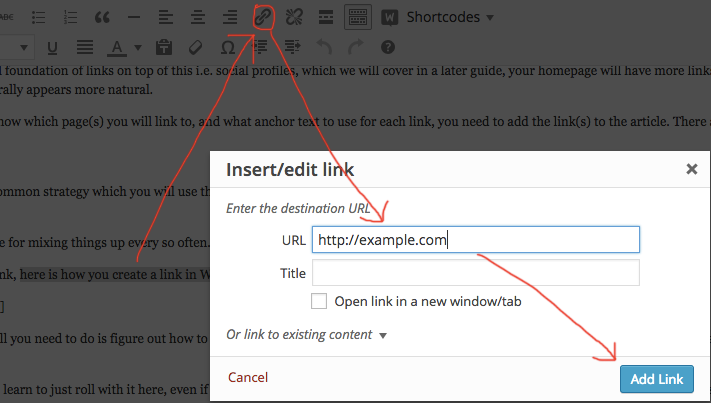
After this, all you need to do is figure out how to include it in the most natural appearing way possible. This can be really difficult if you are targeting say local keywords.
You have to learn to just roll with it here, even if it doesn’t sound that great. Here is an example of targeting a local keyword “dog trainers in texas”.
There are many important factors that go into properly training a dog. As the owner of a not-so-well trained dog, I’m probably not the best person to teach you. So I won’t. Instead, I’ve asked a friend of mine, and one of the top dog trainers in texas to go through it with you.
Images on the other hand, are significantly easier. All you need to do is set the alt tag on the image:
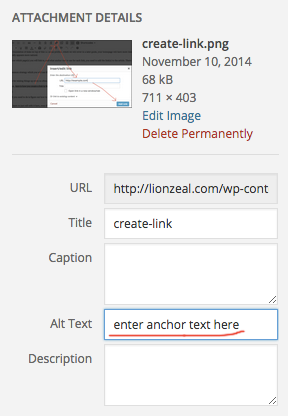
Now when you link this image, same as you do for text links, the alt tag will be treated as the anchor text. This is completely invisible to readers, so no issues with out of place anchor texts.
How many different money sites can I link to? 8 is about the max.
You want all of the links to be on the homepage. Most people link to the homepage of a website, so it is where all the link juice and power is, which we will be passing on to our money sites.
The limit of posts on the homepage is 10. After that, they go onto a second page.
If you do not use sticky posts at all, you can link to 10 different money sites, but it’s not advised that every single one of the 10 posts has a link in it, since that’s not natural behaviour for a blog.
Advanced Clustering

Network Clustering
Earlier in this guide, we covered hosting and I briefly mentioned that you could host multiple websites on a single hosting plan with zero risk. This is done with clustering.
This is very professional diagram showing what the opposite of clustering looks like…
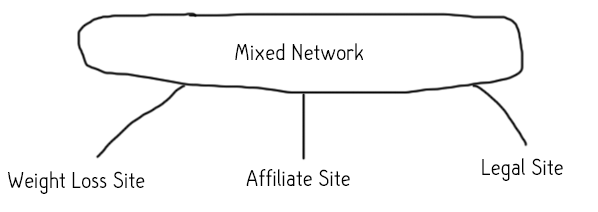
You can see that the mixed network just links out to every money site. Not every PBN site will link to every money site, but there will be a linking footprint throughout the network. Example here:
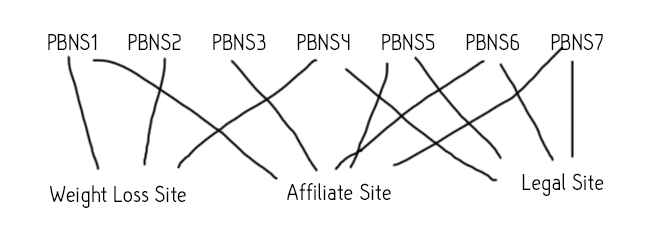
PBNS stands for “Private Blog Network Site”.
If Google found out about the Weight Loss Site, or PBNS1, the entire network could be infiltrated. Like so:
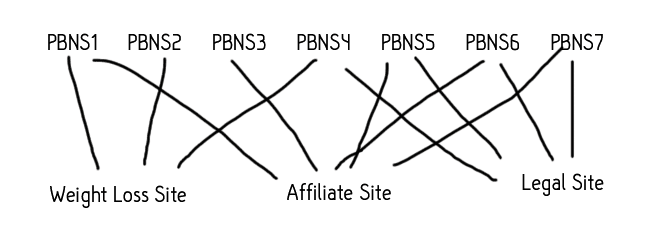
Here is a quick example of clustering. Usually people do it around niches their PBN sites are in. This allows you to get niche relevant backlinks, but there is a flaw..
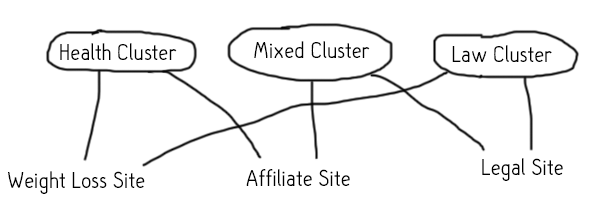
Once again, the risk here is that if a single money site or PBN site is infiltrated, they may be able to pull apart your whole network.
Instead you should ensure that no money site has links from more than a single cluster. For example:
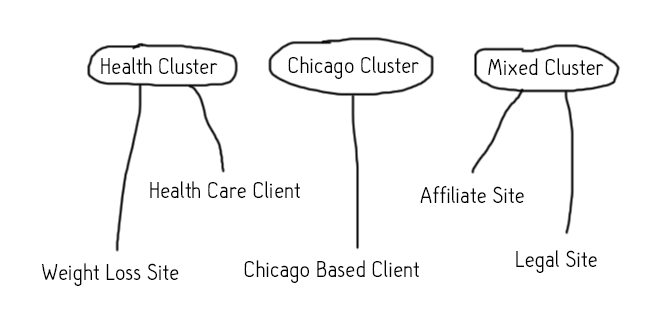
Using the example above, if you had 25 sites per cluster. If the weight loss site received a full backlink manual review, the worst case scenario is you lose the health cluster – not the others. Same if the health cluster sites were manually reviewed, you could only lose sites part of that cluster.
You can link to as many sites as you like in a single cluster, and you can have as many PBN sites in a single cluster as you like, but this gives you a security pre-caution of not potentially losing your entire network at once.
It also saves you a small fortune. It also allows you to host PBN sites from different clusters on the same hosting account, as they will never link to the same websites.
To put this into perspective, if your average hosting bill is $8 per blog for reputable hosts, but you own 10 different clusters, that brings your bill down to only $0.8 per blog.
If you are just starting out, now is the perfect time to learn about network clusters. Once your network is big enough to rank the money site(s) you are currently working on, you can separate that as one cluster and start building the next.
Remember you can rank up to 8 money sites off of a single PBN site, therefore off of a single cluster, it’s just about eliminating your risk as much as possible.
If you work with high end clients, you can even go as far as creating separate clusters for each individual client. Same goes for if you have affiliate sites that make 4 figures plus per month.
Also a cluster does not need to be niche relevant, that’s just convenient. You can mix this in with any of the site theming methods covered above.
Bot Blocking
A private blog network does not mean private to Google. We need Google on our sites to see the links we create. Instead, the idea of a private network is that it is private to the rest of the world, especially your competition.
The padding and structuring parts of this guide will go a long way with masking your strategy to your competitors, but blocking bots takes this to a whole new level.
If you want to see how your competitor is ranking, you need to look at their links. To do this you will probably use the same tools we covered earlier in this guide (for domain analysis):
Majestic.com, OpenSiteExplorer.org, or Ahrefs.com
But with bot blocking, you can completely hide your PBN sites from showing up in these tools. That means your competitors would have no idea how you are ranking, and never see your PBN sites.
This can be achieved by adding the following code to your htaccess file:
SetEnvIfNoCase User-Agent .*exabot.* bad_bot
SetEnvIfNoCase User-Agent .*mj12bot.* bad_bot
SetEnvIfNoCase User-Agent .*dotbot.* bad_bot
SetEnvIfNoCase User-Agent .*gigabot.* bad_bot
SetEnvIfNoCase User-Agent .*ahrefsbot.* bad_bot
SetEnvIfNoCase User-Agent .*sitebot.* bad_bot
SetEnvIfNoCase User-Agent .*spbot.* bad_bot
Order Allow,Deny
Allow from all
Deny from env=bad_bot
Here is how to do that…
Login to cPanel and click to open the File Manager:
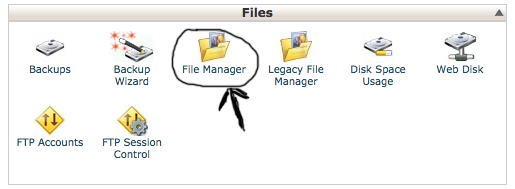
If there is more than one domain on this cPanel account, make sure the correct domain is showing in the dropdown box (I removed it in this screenshot).
Tick ‘Show Hidden Files’. Click Go.
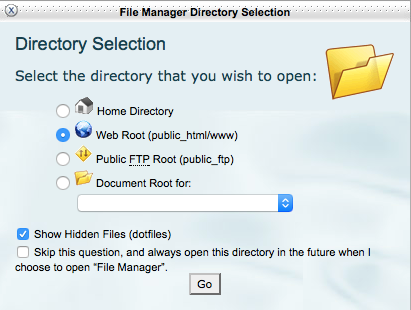
Locate the ‘.htaccess’ file, right click and then ‘Edit’.
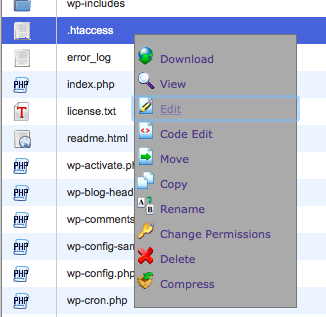
Click Edit again to open the editor.
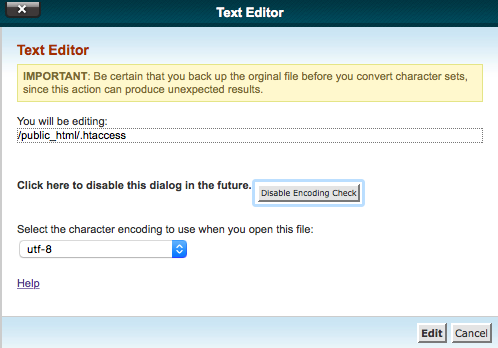
Now above the #BEGIN WordPress line, paste in the whole code from above. Save Changes, and you’re finished
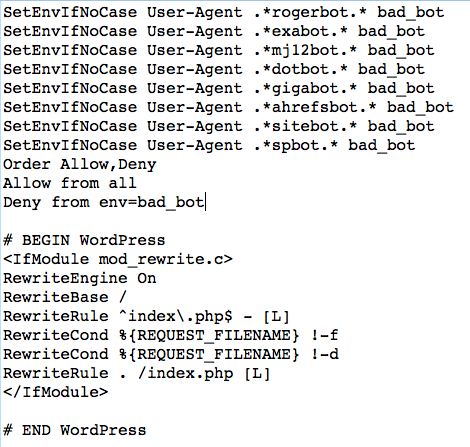
If Google wanted to, they could still check this. All they would have to do is impersonate the user agent of the bots you block [to see if they are blocked]. I wouldn’t put it past them.
This would only be an indicator after checking other footprints, I doubt they impersonate bots and crawl the entire web to find sites that don’t work.
If you are purely targeting local or other non-competitive keywords (aka little SEO competition), you may even want to allow bots.
For affiliate SEO’s competing on things like ClickBank products – that isn’t an option for you.
Outsourcing and Creating Systems
If you have not realised already, there is a heck of a lot of work involved with building a private blog network. It is however, a long term investment in your business.
One of the big differences from the newbies with less than 50 sites, and the experts with hundreds or even thousands, is the use of tools and systems to leverage their time better.
I’ve already given away the exact tools and systems (inc. Excel sheets) I use in an earlier post, you can access all of them here. I highly recommend reading that post before starting.
Alternative Solutions

If this still sounds too much for you, even with the outsourcing and automation options, there is another more common solution:
Rent links from other peoples blog networks.
That way, you can avoid all the time and costs of building and managing a network, yet still get all the value.
There’s several services that do this, including my own, which you can apply for here.
Please be careful though that the network you’re renting links from is well maintained, otherwise you could be at risk.
Anyway, that’s about all I’ve got for you in this guide. If you enjoyed it and would like more posts like this in the future, leave a comment and let me know, I try to respond to them all.


